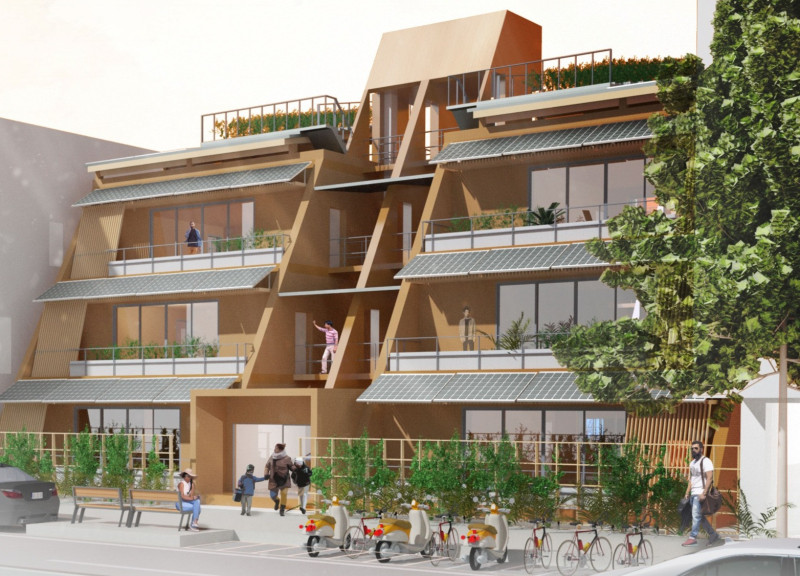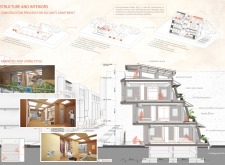5 key facts about this project
The "Versatile" architectural design project presents a thoughtful solution for modern residential living, addressing the needs of middle-class families. Located in an adaptable environment, the concept aims to provide a home that changes along with its inhabitants. With an area of approximately 90 square meters, it is designed for flexibility, allowing different family configurations through its innovative layout and features.
Flexible Spatial Organization
The layout of “Versatile” promotes adaptability, ensuring it meets various family needs. It supports different life stages, from couples to larger families, encouraging fluid transitions between spaces. Elements such as sliding partition doors and movable furniture incorporated into a rail system allow residents to modify their surroundings easily. This design creates a convenient living space without sacrificing coherence.
Sustainability Through Design
Sustainability is an important aspect of the design. Cross-laminated timber serves as the primary material, highlighting the commitment to environmentally friendly construction. This material is chosen for its durability while ensuring minimal impact on the environment. By prefabricating components, the assembly process is efficient and reduces waste on-site. Additionally, features like dual flush toilets and water-saving faucets contribute to minimizing resource consumption in daily use.
Community Orientation and Connectivity
The design encourages a sense of community by allowing for the combination of several units into groups of three or six. This arrangement optimizes land use and fosters social interaction among residents. Shared resources and communal spaces enhance the feeling of belonging, making it suitable for diverse urban settings. This aspect of the project ensures flexibility while adhering to various urban planning regulations and environmental contexts.
Navigating through the interiors reveals the careful blend of adaptable spaces and sustainable practices. Each area serves a specific function while remaining open to reconfiguration, reinforcing the essential idea of versatility. This design approach prioritizes both practical needs and environmental awareness, creating spaces that grow and change alongside their inhabitants.






















































